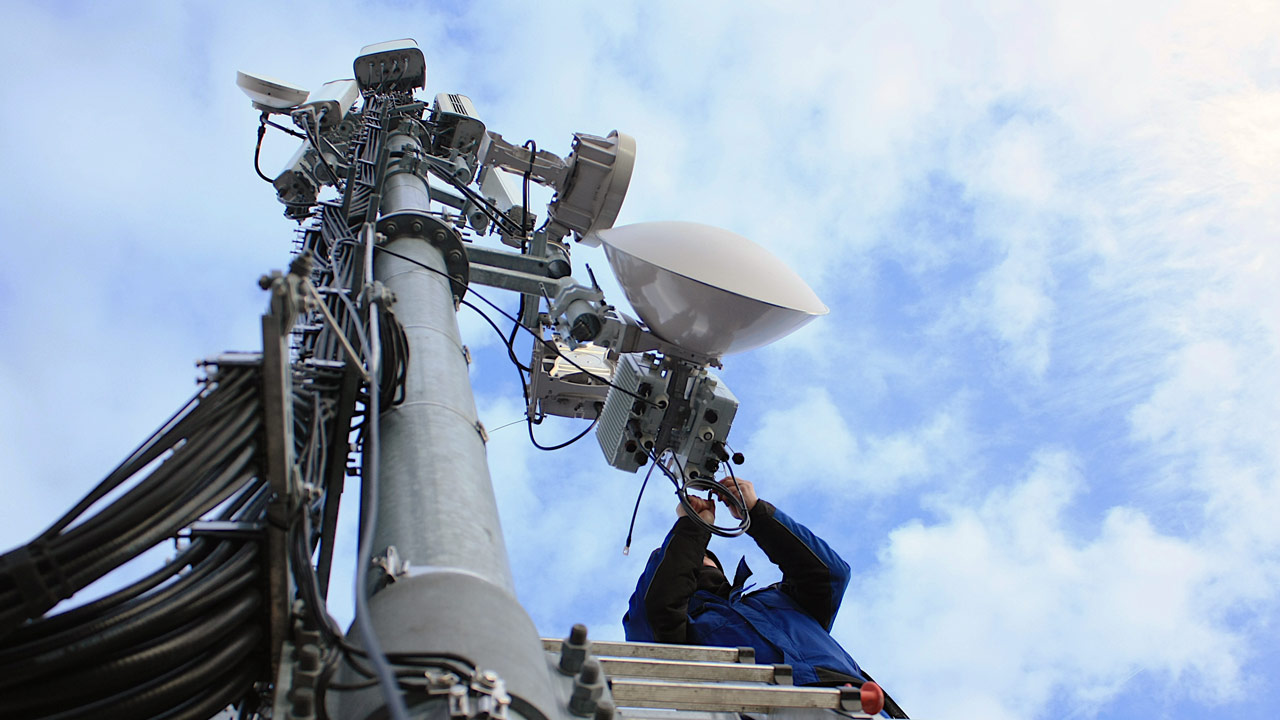20.12.2021
Milestone in Software-Defined Networking (SDN):O2 / Telefónica uses new standardized SDN interface for 30,000 microwave links

Directional antennas ensure fast data transfer (up to 10 Gbit/s) between the mobile site and the next network node.
O2 / Telefónica has reached a milestone in the implementation and control of software defined network functions. For the first time, the telecommunications provider – together with its technology partners – has implemented a vendor-agnostic SDN interface in its nationwide O2 network. This interface is compatible with a wide range of microwave systems, enabling the company to implement changes to its microwave links uniformly across all manufacturers and in near real time. O2 / Telefónica is already using this innovative interface for all of the approximately 30,000 microwave links in the O2 network, which are responsible for transporting data between mobile network sites and the next network node with capacities of up to 10 Gbit/s. Microwave complements fiber-optic services to transport large amounts of data over longer distances cost-effectively and efficiently over the air.

Mallik Rao
"Together with our partners, we are pioneering SDN within the microwave domain. The technological requirements for the mobile network of the future are continuously increasing. Software-based approaches such as SDN are helping us to reduce the complexity of our network architectures and to drive our network expansion even faster and with higher quality through a greater degree of automation. For example, our technology team is already continuously developing new applications that can be made available across manufacturers within a matter of weeks," says Mallik Rao, Chief Technology & Information Officer at O2 / Telefónica Deutschland.
With the current SDN innovation, O2 / Telefónica Deutschland can access specific hardware from different manufacturers via a uniform software interface. All applications for network management and further automation are thus created manufacturer-independent.
Basis for network automation as well as new, cross-vendor applications

O2 / Telefónica can also directly integrate more modern radio relay systems and new manufacturers via SDN.
The first applications are already available for the systems of all microwave partners, enabling O2 / Telefónica to expand the network for its customers in an even more targeted manner: The company can now fully automate the acceptance procedure for a new or modified microwave link. Changes to microwave nodes are now also possible within a few seconds. These can be centrally imported into the network across all microwave systems from different manufacturers - regardless of whether they involve the integration of new microwave links, new routings for data traffic or fundamental changes in the network configurations. In the past, such changes sometimes required up to 24 hours for final implementation in the network.
In the future, SDN-based applications will be able to work almost unchanged with more modern microwave systems or systems from new manufacturers. This already massively simplifies the maintenance and adaptation of complex network management and network expansion processes.
The new, unified interface also forms the optimal basis for future applications that can use artificial intelligence and machine learning to automatically analyze and improve availability and network utilization throughout the entire microwave network.
Successful cooperation with network equipment providers and IT partners

Software-based approaches simplify network architecture and accelerate network expansion.
O2 / Telefónica has successfully collaborated with its partners Ericsson, Huawei, SIAE Microelettronica, TechMahindra, Wipro and highstreet technologies/FRINX, as well as with the Open Network Foundation (ONF) for this purpose.
For O2 / Telefónica, this is the next logical step in the development and implementation of open interfaces and multi-vendor systems in the mobile network. In December 2020, the company had already put the first Open RAN sites into operation in Landsberg am Lech in Bavaria, thus deploying Software-Defined Networking in the antenna network. Now the company has extended the approach to the transport network as well. In the future, SDN will increasingly penetrate all areas of the network - from the antenna network to the core network.
Technical details:
O2 / Telefónica has successfully completed the integration of its approximately 30,000 microwave links to the new interface (NETCONF) via an open SDN controller (Open Daylight Controller). The latest interface standard of the Open Network Foundation (ONF TR-532) is used.